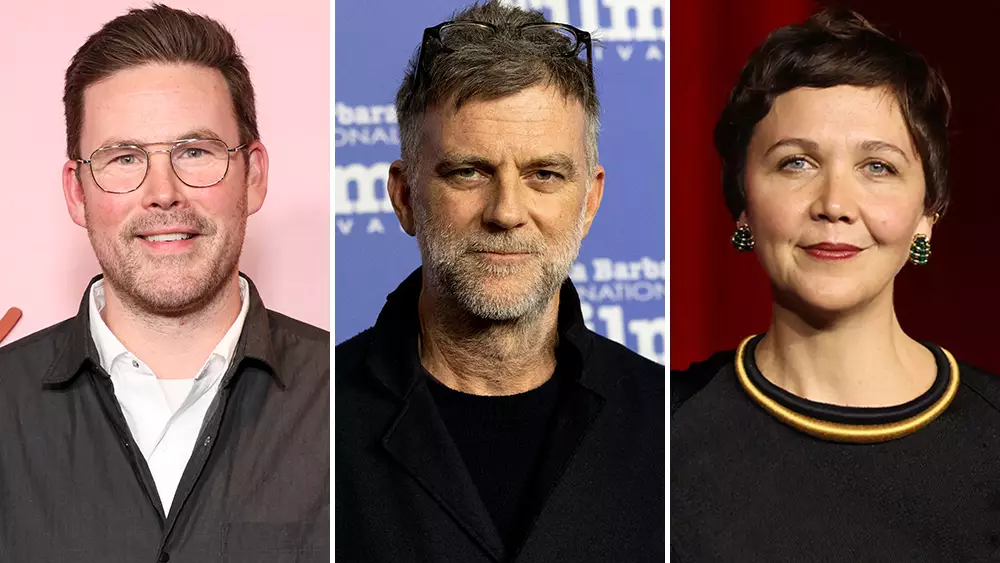Warner Bros. has recently undertaken a significant overhaul of its film release schedule, a strategic maneuver that could set the tone for both profitability and viewer engagement in the months to come. In a world where blockbuster titles are often left floundering amid industry changes and audience preferences, Warner’s sharp adjustments exemplify a company that is not only aware of its competitive environment but is actively maneuvering within it. With cinema attendance figures fluctuating and many studios scrambling to solidify their footing post-pandemic, it’s critical to ask: is Warner’s new strategy brilliant foresight or a risky gamble?
The company’s reshuffling of dates comes hot on the heels of mixed reception towards some auteur-driven films, including Bong Joon Ho’s recent endeavor. By moving the release of “Weapons,” directed by Zach Cregger, to August 8, Warner Bros. is not merely seeking to fill gaps left by underperforming projects but is instead positioning itself directly against formidable competition like Disney’s sequel to “Freaky Friday.” The question remains, will audiences gravitate towards original titles when they’re rekindling their memories of family-friendly classics?
IMAX: The Crown Jewel of Release Strategy
One of the most fascinating aspects of Warner Bros.’ adjustments is their reliance on premium cinema formats like IMAX. The studio’s insight into the importance of these high-demand screens reveals a deep understanding of the evolving movie-going experience. Audiences are increasingly seeking more immersive experiences, so leveraging IMAX anthems not only drives ticket sales but heightens the spectacle of the cinematic experience. Such foresight may become critical for theaters seeking to bolster attendance in the wake of scarcity in blockbuster film offerings.
However, tying release dates to IMAX availability raises critical questions about accessibility for mainstream audiences. Yes, the allure of an IMAX experience can drive ticket prices up but does this practice inadvertently alienate those who might prefer traditional formats? The balance between catering to exclusivity and maintaining broad market appeal is a delicate one, and Warner Bros. will need to tread carefully if they wish to reap the benefits without sacrificing inclusivity.
The Rise of Auteur Filmmaking
The release date shifts also provide poignant commentary on the state of auteur filmmaking within mainstream cinema. As evidenced by Paul Thomas Anderson’s upcoming release, “One Battle After Another,” there’s an undeniable weight given to artistic visions within Warner Bros.’ narrative. The hefty budget of $140 million merges both commercial viability and artistic ambition. Yet, the question remains: can a balance truly be maintained?
Anderson has experienced varying degrees of success in festival circuit launches, and the whisperings around whether his latest film will join that parade only add to the intrigue of its release. When production costs escalate, scrutiny becomes inevitable. The entertainment industry is rife with tales of artistic integrity compromised in the name of commercial success—will Anderson’s latest be able to navigate these treacherous waters?
Strategizing Against the Competition
Warner Bros. is invariably setting itself up to face fierce competition. The strategic lifts and shifts of release dates come with their own perils, especially in an evolving landscape dominated by franchises. By pushing “The Bride!” to March 6, 2026, and plopping it into a previously relative vacuum of release dates, Warner hopes to capitalize on the season that has consistently welcomed box office giants. Yet with Paramount’s “Scream 7” looming on the horizon, is this a wise move, or a subconscious admission of vulnerability?
While the competition is fierce in the horror and thriller genres, the decisions are rooted in the desire to capitalize on moments of lowered audience expectations where originality can shine. However, it often becomes more of a chess game of release strategy—timing not only must consider factors such as holiday seasons but also direct competitor release dates.
Animation’s Promising Potential
With films like “The Cat in the Hat” planned for release on February 27, 2026, the animation segment of Warner Bros.’ lineup also merits attention. This marks an opportunity for Warner to court family audiences while ensuring they don’t lose their grip on other segments of the viewer demographics. Animation has long been a consistent money-maker—not just for Warner but for the industry as a whole.
In this arena, the importance of a well-cast voice lineup—encompassing talents like Bill Hader and Quinta Brunson—cannot be overstated. Such elements enhance viewer attraction and marketing opportunities. The release date’s proximity to competing animated features will be a litmus test, as mismatched release schedules could either position “The Cat in the Hat” to thrive or flounder. The power of nostalgia should not be underestimated, especially considering that the original stories have cemented a legacy in children’s literature.
Warner Bros. is clearly aiming to regain its footing and usher in a phase where artistry and commerce can coexist, but whether or not this strategy will pay off remains to be seen.

